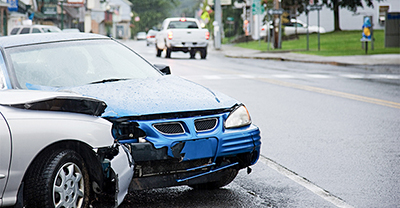10 safe driving tips


0 min. read
According to the National Highway Traffic Safety Administration, approximately 1.25 million people die each year from road traffic injuries.
Whether you're a seasoned or new-to-the-road driver, implementing the following safety tips and preventative measures can help you avoid accidents and reduce your risk of injury and costly claims. Explore Dairyland’s cheap car insurance options to find the coverage that fits your lifestyle and budget.
1. Never drive drunk
More than 30% of fatal car accidents involve alcohol. Alcohol impairs your ability to drive in several ways, including:
Reduced reaction time
Reduced judgment
Reduced coordination
Increased risk-taking
Impaired vision
Drowsiness
Even low levels of alcohol can reduce your reaction time and contribute to reckless driving choices.
Not only is drunk driving dangerous, it's also a crime—both driving under the influence (DUI) and driving while intoxicated (DWI). In the United States, operating a vehicle with a blood-alcohol content (BAC) of 0.08 or higher can result in jail time, hefty fines, and insurance ramifications.
2. Always wear your seat belt
When you wear your seat belt as a front-seat passenger, you can limit your chances of moderate to severe injuries by 50%. You can also reduce the chance of a fatality by 45%. It may seem obvious, but one in 10 drivers and passengers report not wearing their seat belt.
You can't get any more essential and easy than buckling up whenever you're in the car.
3. Educate teen drivers
Motor vehicle crashes are the leading cause of death among teens aged 16–19. Unfortunately, this age group also has a fatal crash rate nearly three times as high as drivers aged 20 and older.
Whether you're a parent or simply an adult teaching someone how to drive, it's up to you to explain the risks of distracted driving, drunk driving, and other dangerous behaviors. You can set a good example by following safe driving practices and reinforcing the importance of responsible driving.
Encourage your teen drivers to limit the number of passengers in their cars, avoid using their phones while driving, and never get behind the wheel after drinking.
4. Perform regular vehicle maintenance
Regular maintenance is essential to keeping your vehicle running smoothly and reducing the risk of accidents.
Make sure the mechanic does the following at your regular check-ups:
Checks the brakes
Checks the battery
Inspects and rotates/balances the tires
Ensures the lights are working
Checks the windshield wipers
Inspects the belts and hoses
Checks the fluids
Check the suspension and steering
If the mechanic finds any issues during the inspection, have them fix the problem areas immediately. You don't want the issues to turn into bigger headaches—and larger safety hazards—down the road.
5. Practice defensive driving
Defensive driving involves being aware of your surroundings and anticipating potential hazards on the road. Make sure you're driving defensively by:
Staying alert and avoiding distractions
Keeping a safe following distance
Scanning the road ahead for potential hazards
Following the speed limit and all traffic laws
Using your signal when you need to turn
You can even get a discount on most insurance policies for participating in a defensive driver course.
6. Avoid distractions
Distracted driving is one of the leading causes of accidents—and death—on the roadway. Avoid this deadly habit by:
Storing your mobile phone while driving
Limiting how often you touch and look at your GPS, radio, and other electronics
Limiting conversation with passengers
Avoiding eating and drinking
Using voice commands if your car is equipped with voice-activated technology
7. Don't drive when you’re drowsy
Did you know that driving while drowsy is as dangerous as driving drunk or high? Like alcohol and drugs, driving drowsy can impair your ability to drive safely and react quickly. Avoid drowsy driving by:
Getting enough sleep
Driving only during your regular waking hours
Taking breaks
Recognizing when you're tired so you can pull over for a nap or ask a passenger to drive for a while
9. Avoid road rage
Sixty-six percent of traffic fatalities come from aggressive driving and road rage. To keep your cool on the road, give yourself plenty of time to reach your destination. Rushing around often leaves people feeling anxious while driving. So leave early, listen to calming music or your favorite podcast, and avoid gesturing if other drivers do something you don’t like.
10. Keep your distance
Tailgating—following too closely behind the vehicle ahead of you—is a dangerous habit. Instead, stay an appropriate distance from them. Experts recommend keeping at least three seconds between your vehicle and the one in front. To do this, pick a stationary object on the road, such as a sign or a tree, and count the seconds it takes to reach the object after the leading vehicle passes it.
Vehicle safety: Frequently asked questions
What are some common causes of car accidents?
Distracted driving
Drunk driving
Speeding
Reckless driving
Adverse weather conditions
Fatigue
How can I help ensure my vehicle is in good condition before a long drive?
Check the vehicle's fluid levels, tire pressure, and lights before heading out on a road trip.
What should I do if I'm involved in an accident?
If you're involved in an accident, check yourself and anyone else involved for injuries. If anyone is seriously hurt, call 9-1-1. Then, move to a safe location and call the police. Exchange contact and insurance information with the other driver(s) and take pictures of the scene and damage. Then, call your insurance agent.
What are the most important traffic laws to know?
Speed limits
Traffic signs, signals, and lights
Right of way rules—particularly at intersections, on- and off-ramps, and at pedestrian crossings
What’s important to do in school zones?
Obey speed limits
Remain focused—avoid distractions
Watch for crossing guards
Stop for school buses
Yield to pedestrians
What are some defensive driving techniques?
Stay attentive by limiting distractions behind the wheel
Anticipate actions of other drivers and passengers
Keep a safe distance from other drivers
Use your signals to inform other motorists of your intentions
Protect yourself and your car with auto insurance
Car safety and protecting yourself and your fellow drivers is essential, but accidents can still happen. We offer a variety of affordable and valuable auto coverage options to help protect you financially if an accident occurs. Contact us today to learn more.
Get a free car insurance quote and review your options.
The general information in this blog is for informational or entertainment purposes only. View our blog disclaimer.
*Data accuracy is subject to this article's publication date.










